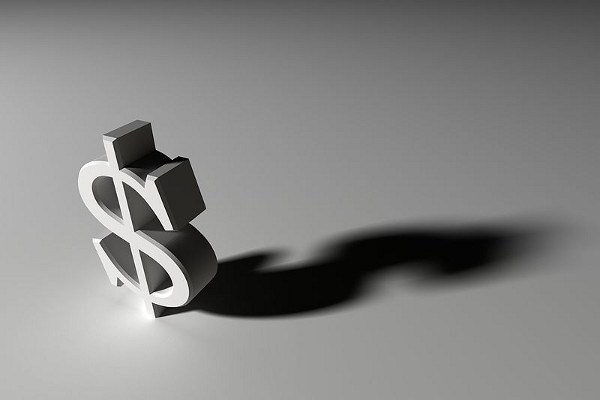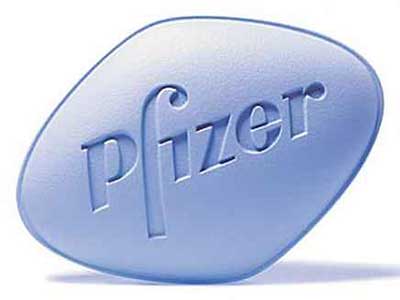by PharmacyChecker.com | Sep 18, 2015 | Drug Prices, Saving Money on Prescription Drugs

Image by Svilen.milev
As reported today in The New York Times, a new study shows that the diabetes drug Jardiance (empagliflozin) can reduce the risk of dying from cardiovascular disease by 38%. The drug not only reduces blood sugar levels, but also blood pressure and arterial stiffness leading to a reduced risk of heart failure.
The cost of Jardiance in the U.S. is about $350 to $400 for just 30 pills. It would be a shame if people could not get this medication due to its high cost. Fortunately, this drug is available from licensed pharmacies in other countries (where the price is controlled or negotiated) at prices which are about 70% lower than in the U.S. As shown on PharmacyChecker.com, the 10 mg dose is available from several verified international online pharmacies for about $110 a month or, better, if purchasing a 3 month supply, it’s under $300. The 25 mg dose is only a few dollars more.
Tagged with: cardiovascular death, Drug Prices, empagliflozin, Jardiance, Online Pharmacies, type 2 diabetes
by Gabriel Levitt, President, PharmacyChecker.com and Prescription Justice | Jun 19, 2015 | Online Pharmacies, Saving Money on Prescription Drugs

Is Viagra really safe to buy online? The truth.
Viagra, pharmaceutical giant Pfizer’s name for a drug called sildenafil citrate, is the most sought after medication on the Internet. You can save a lot of money buying Viagra online, but you can also risk getting a fake or tainted product that endangers your health. Here’s how to stay safe and save money. (more…)
Tagged with: buying online, generic, Pfizer, sildenafil citrate, Viagra
by Gabriel Levitt, President, PharmacyChecker.com and Prescription Justice | Jun 12, 2015 | Drug Prices, Medication non-adherence, Saving Money on Prescription Drugs, Skipping medications
If not treated properly, the breathing condition known as asthma is deadly. In fact, the U.S. Centers for Disease Control and Prevention (CDC) reports that nine people die each day from asthma and in 2009 there were 3,388 deaths. Flovent is an inhaled corticosteroid that treats asthma. Flovent not only makes breathing easier for asthma sufferers, it helps prevent severe attacks that can cause hospitalization.
But Flovent can be prohibitively expensive, especially if you are uninsured or your health insurance will not cover this medication. Kids are often the victim of high asthma drug prices. A 3-month supply of Flovent Diskus (fluticasone propionate) 250 mcg inhalers costs around $778 at a local pharmacy. Based on a typical dosage, that works out to $3,112 per year. That’s a huge number considering the median family income in the U.S. is about $52,000 a year –and of course tens of millions of families make due with much, much less. According to one academic study, failure to take your asthma medication often leads to “decreased quality of life, lost productivity, increased health care utilization, and even the risk of death.”
Pharmacy discount cards can help the situation. With a discount card the price for a 3-month supply might drop down to $684 at a U.S. pharmacy for a 3-month supply, a savings of $131.
But the costs are far lower in other countries for the same medication. Instead of calling it Flovent Diskus, GlaxoSmithKline markets fluticasone propionate as Flixotide Discus, which is sold in licensed pharmacies throughout the world. The foreign version of Flovent Diskus 250 mcg inhaler can be purchased online for about $123 for a 3-month supply or $492 a year. That’s a potential discount of about 84% and a savings of $2619 per year off the price of Flovent Diskus sold in the U.S.!
According to the CDC, about one in 10 children have asthma. It’s a serious but treatable condition. There are effective medications like Flovent Diskus, which is approved for children as young as four years old. My son suffered from cold-induced asthma as a smaller child and it’s scary, and that’s why this particular condition makes me so mad. Parents often can’t afford asthma medications and sometimes must bring their kids to the hospital when their asthma flares up. I think that’s unforgivable and that no parent should have to watch their child suffer, and yet they do from the high cost of medications in the U.S.
Tagged with: 250mcg, asthma, diskus, flixotide discus, Flovent, GlaxoSmithKline
by Gabriel Levitt, President, PharmacyChecker.com and Prescription Justice | May 22, 2015 | Policy, Politics, Saving Money on Prescription Drugs
As you’ll discover below, the Obama administration’s policies to combat the manufacture and sale of counterfeit medications have a lot to do with furthering the agenda of the pharmaceutical industry in discouraging and curtailing online access by Americans to safe and affordable medication. Remember “The Deal” between the Obama administration and Big Pharma, in the form of the Pharmaceutical Researchers and Manufacturers of America (PhRMA), in which the Obama administration agreed to abandon supporting drug importation legal reform to lower drug prices for Americans if PhRMA would support Obamacare? I’ve always wondered how far that deal went.
This week, in our continuing quest to get the truth out and for our elected leaders in Congress to take bold action to protect online access to safe and affordable medication, we’re publishing the next section of our report called Online Pharmacies, Personal Drug Importation, and Public Health…
(more…)
Tagged with: Congress, CSIP, GoodRx, intellectual, Intellectual Property Enforcement Coordinator, IPEC, Obama Administration, rogue online pharmacies, safe online pharmacies, United States
by Gabriel Levitt, President, PharmacyChecker.com and Prescription Justice | Jul 23, 2014 | Drug Prices, Saving Money on Prescription Drugs, Specialty Drugs
Ever since the FDA approved Sovaldi (sofosbuvir), and its price was announced – $1,000 per pill – healthcare advocates, health insurance companies, pharmacy benefit managers, consumer groups, and politicians have been up in arms. Its cost, for the usual prescription of 84 pills, is about $31,000 more than the median annual household income in the United States, which is about $53,000. How could a 12-week drug treatment plan cost $84,000?! Well, the manufacturer of Sovaldi, Gilead Sciences, can charge whatever it wants since there is no equivalent brand drug or generic on the market and the U.S. government, by law, cannot legally negotiate drug prices for Medicare.
The costs to treat Hep C don’t stop with Sovaldi by the way. Depending on the genotype of a person’s Hep C, Sovaldi is prescribed as part of a medication cocktail that also includes either ribavirin or ribavirin and an Interferon treatment. Total prices for treatment can reach $160,000 but we’ll just focus on Sovaldi so as not to bite off more than we can chew.
This Twilight Zone approach to pricing Sovaldi and other specialty medications pumps up the rage volume to a frightening anti-pharma crescendo, but now a moment of silence: Thank you scientists, medical researchers, and dedicated people at Gilead for developing this truly awesome medication and bringing it to market. Sovaldi actually cures Hepatitis C, a disease that afflicts about 3.2 million Americans! Rock on Gilead! Gilead and its shareholders should and shall be rewarded handsomely.
Despite this, Gilead and the Big Pharma Gang should not be allowed to threaten the American healthcare system with obscene prices, even for their wonder drugs. Is Gilead really expecting to be paid $84,000 to treat 3.2 million people: a cost of $268 billion? That is more money than the gross national products of 150 countries! Finland’s annual economic output in 2013 was $257 billion. On to the dirty dollar details… (more…)
Tagged with: Gilead Sciences, Sovaldi, specialty drugs, Specialty Medications
by Gabriel Levitt, President, PharmacyChecker.com and Prescription Justice | Mar 21, 2014 | Drug Prices, Generic drugs, Saving Money on Prescription Drugs
It seems Americans are increasingly showing up at their neighborhood pharmacies to find out that their medications’ prices have increased exponentially, by as much as 100, 200, 300, 600%…2500%! Believe me, I’m not exaggerating. In an article with a similar title as this blog post, called “Drug Price Gouging,” Steve DeFillippo brings us two examples of sickening drug price spikes. In one instance, a Mr. Gary Loser showed up at the pharmacy only to find that the price of his prescription drug went from $5.50 to $34.50 – an increase of 600%. Mr. DeFillippo then one upped Mr. Loser by recounting his drug price blast-off, when the price of his medication, Nadalol, went from $10 to $252 for a for a 90 day supply – a 2500% increase!
Americans frequently, and usually with good reason, blast big brand-name drug companies, like Eli Lilly, Merck, and Pfizer for charging much higher prices domestically than internationally. In this case we can’t slam big pharma because the medication at issue, Nadolol, is generic and has been around for 40 years. Generic drugs are usually pursued by consumers because their prices are so low. Moreover, generic drugs are usually less expensive in the U.S. than in Canada and many other countries.
So what the heck is up?
The “theory” I’m proposing is more or less just telling you what I’ve heard anecdotally from small U.S. pharmacy owners about these insane generic drug price increases. Over the last year or so, big chain pharmacies, such as CVS and Walgreens, have started to raise generic drug prices to maximize their profits. Now their profit margin is largely the difference between their costs, the wholesale price, and what they can sell it for to individuals, the retail price. Wholesaler pharmacies have apparently realized how much money the big U.S. pharmacy corporations are making on the large profit margins from some generic drugs. These wholesalers want a bigger piece of the pie so they are raising their prices, too. When that happens, good ole’ mom and pop pharmacies, ones that have tried to keep prices down, have to raise their prices, too. So it’s a vicious spiral.
You often don’t have to pay those crazy high prices but you’ve got to shop around. For instance, Nadolol 20mg can be purchased for much less, 100 pills for $52.22, using a prescription drug discount card at a local U.S. pharmacy.
I recommend calling your local pharmacy before you go pick up your medication. If the price is too high then go elsewhere to avoid getting gouged.




